Player movement prediction algorithms work by continuously analyzing your position, velocity vectors, and input signals to anticipate your next moves in virtual environments. They use real-time data processing with vector mathematics, calculating velocity as (Current Position – Previous Position) / DeltaTime, then predicting future positions using current velocity multiplied by prediction time. These systems handle network latency through client-side prediction and server reconciliation, while machine learning models achieve over 75% accuracy by recognizing your behavioral patterns and adapting to sudden direction changes for smoother VR experiences that minimize motion sickness and visual artifacts.
Core Components of VR Movement Prediction Systems
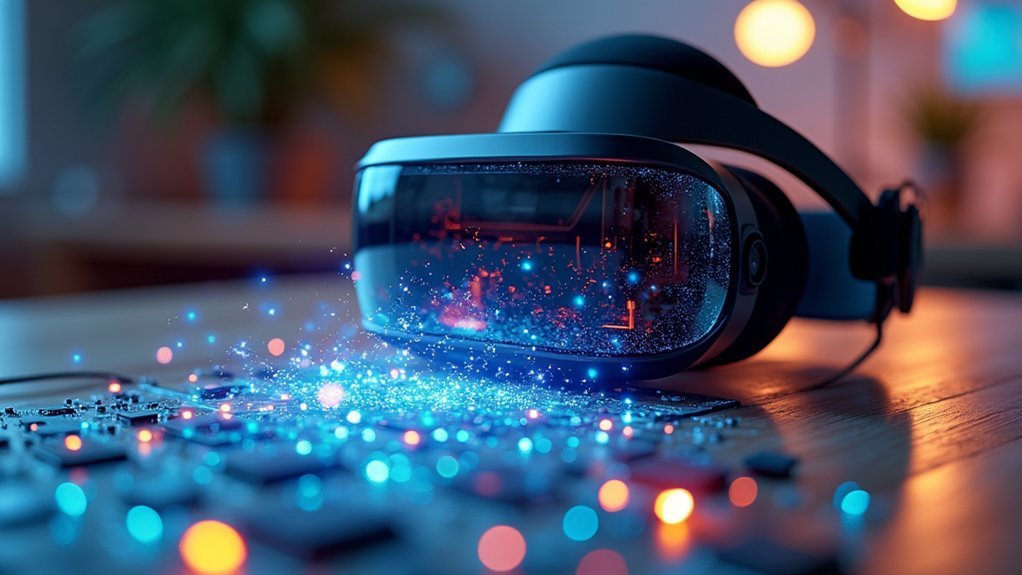
When developing effective VR movement prediction systems, you’ll need to focus on several vital components that work together to create seamless user experiences.
Real-time input detection serves as your foundation, utilizing methods like UserInputService:IsKeyDown() to capture directional intentions instantly. Your movement prediction algorithms must process current velocity data alongside user inputs to anticipate future positions accurately.
Visual feedback mechanisms become essential for enhancing spatial awareness—spawning blocks or indicators helps users visualize their predicted paths effectively.
Effective VR systems rely on visual cues like spawned indicators to help users understand and predict their movement trajectories in virtual space.
You’ll also need adaptive algorithms that respond to unpredictable user behaviors, accounting for sudden direction changes and acceleration variations.
These core components must integrate smoothly, ensuring your prediction system maintains accuracy while delivering the responsive, immersive experience that modern VR applications demand.
Real-Time Data Processing for Spatial Tracking
Three fundamental data streams drive effective spatial tracking in VR movement prediction: positional coordinates, velocity vectors, and user input signals.
You’ll need algorithms that continuously analyze these streams to predict where players will move next. Your system processes key presses and movement direction in real-time, adjusting predictions based on current player behavior and trajectory.
You must account for unpredictable movements and sudden direction changes, similar to guided missile interception strategies. This enhances prediction accuracy when players make unexpected moves.
Visualization techniques help you understand prediction effectiveness – spawning blocks at predicted future locations shows real-time accuracy.
Community collaboration proves invaluable for refining your spatial tracking algorithms. You’ll benefit from shared insights and code examples that improve prediction strategies across different gaming environments.
Vector Mathematics and Velocity Calculations

You’ll need to master basic vector operations like addition, subtraction, and scalar multiplication to build effective movement prediction systems.
When players change direction or speed unpredictably, you can use velocity interpolation techniques to smooth out sudden movements and maintain realistic trajectories.
You must also factor in acceleration impact calculations, since ignoring how forces affect velocity over time will cause your predictions to drift considerably from actual player positions.
Basic Vector Operations
Since player movement prediction relies heavily on mathematical foundations, you’ll need to master basic vector operations to create accurate and responsive game mechanics.
These operations form the backbone of any prediction system.
Here are the essential vector operations you must understand:
- Vector Addition and Subtraction – Adjust player positions based on user input by adding or subtracting directional vectors from current positions.
- Velocity Calculation – Determine speed and direction using the formula: Velocity = (Current Position – Previous Position) / DeltaTime.
- Position Prediction – Calculate future locations with: Predicted Position = Current Position + Current Velocity * Prediction Time.
- Component Analysis – Break down vectors into x, y, and z coordinates for precise 3D movement implementation.
Mastering these fundamentals guarantees your prediction algorithms work seamlessly.
Velocity Interpolation Techniques
To enhance accuracy, you can incorporate acceleration by adjusting velocity calculations for speed changes during prediction periods.
Your interpolation depends on consistent time steps—Unity typically uses 0.02 seconds for physics calculations.
You’ll achieve realistic movement by implementing linear interpolation (lerp) for position shifts and spherical linear interpolation (slerp) for rotation smoothing, particularly when dealing with angular velocity scenarios.
Acceleration Impact Calculations
Your acceleration impact calculations should include:
- Gravitational effects for projectile trajectories and falling objects
- Force vector analysis to determine acceleration direction and magnitude
- Iterative refinement through continuous velocity adjustments at each timestep
- Multi-axis acceleration handling for complex three-dimensional movement patterns
You’ll achieve realistic movement prediction by treating acceleration as a vector quantity, enabling simultaneous calculation of speed and directional changes that mirror real-world physics in your game environment.
Handling Network Latency in Virtual Environments

When you’re developing virtual environments, network latency becomes one of your biggest enemies in creating smooth, responsive gameplay.
You’ll need player movement prediction algorithms to anticipate where users are heading before server updates arrive. Traditional dead reckoning uses historical movement data to predict trajectories, but it’s often insufficient under challenging conditions, achieving only 44.54% accuracy in real game scenarios.
Smart Reckoning offers a superior alternative, leveraging machine learning to reach 78.76% overall accuracy.
You can test these algorithms in simulated latency environments with reduced server tick rates like 4 updates per second.
Remember that continuous community feedback is essential—erratic user behavior will expose prediction inaccuracies that you’ll need to address through real-time adjustments and algorithm refinements.
Collision Detection and Response Mechanisms
You’ll need robust physics-based collision detection algorithms like Physics.Linecast to identify obstacles along your predicted movement paths in real-time.
Once you’ve detected a collision, you must calculate the proper impact response by determining the surface normal and applying the coefficient of restitution to adjust velocities accurately.
Your system’s ability to handle restitution and bounce effects will directly impact how realistic player interactions feel, especially in multiplayer environments where precise collision responses prevent visual artifacts like snapping or overshooting.
Physics-Based Collision Detection
Physics-based collision detection forms the computational backbone of realistic player movement prediction, requiring you to implement sophisticated algorithms that can identify and resolve object intersections in real-time.
You’ll need to understand how these systems optimize performance while maintaining accuracy.
The collision detection process involves several key components:
- Broad phase filtering – You’ll quickly identify object pairs that might collide using spatial partitioning or bounding volume hierarchies.
- Narrow phase calculations – You’ll perform precise intersection tests between potentially colliding objects.
- Collision response handling – You’ll apply momentum conservation and restitution coefficients to adjust velocities.
- Continuous detection methods – You’ll prevent fast-moving objects from tunneling by calculating trajectories over time.
These techniques guarantee your movement prediction algorithms can handle complex physics interactions effectively.
Impact Response Calculations
Determining accurate impact responses requires sophisticated calculations that transform collision detection data into realistic velocity changes for your game objects.
You’ll need to implement impact response calculations using the collision surface’s normal vector and coefficient of restitution to determine how much energy remains after impact. The formula incorporates relative velocities between colliding entities, applying the collision normal to guarantee authentic physical behavior.
Your simulation loop must iteratively check for collisions at each time step using tools like Physics.Linecast, which provides essential data including impact points, surface normals, and distances.
When collisions occur, you’ll adjust object velocities based on these calculations. This approach maintains immersive gameplay, especially for fast-moving objects or dynamic player interactions requiring precise physics responses.
Restitution and Bounce
Two fundamental properties govern how objects behave when they collide: the coefficient of restitution and the resulting bounce characteristics.
When you’re implementing collision response systems, restitution directly determines how much energy transfers during impact.
Here’s how restitution affects your collision calculations:
- Value of 0 – Complete energy absorption, causing objects to stick without bouncing
- Value of 1 – Perfect elastic collision, preserving all kinetic energy through the bounce
- Intermediate values – Realistic energy loss, creating natural-feeling movement responses
- Surface-specific coefficients – Different materials exhibit unique restitution properties for varied gameplay
You’ll use Physics.Linecast to detect collision points and surface normals, then apply restitution coefficients to modify post-impact velocities.
This creates believable object interactions that maintain player immersion through physically accurate bounce behaviors.
Machine Learning Models for Behavioral Patterns
While traditional prediction algorithms rely on mathematical extrapolation, machine learning models can recognize and classify complex behavioral patterns that emerge from real player interactions. You’ll find these models excel at categorizing movement types, from straight-line trajectories to behavior influenced by environmental points of interest.
| Algorithm | Accuracy | Movement Type |
|---|---|---|
| Dead Reckoning | 44.54% | Linear extrapolation |
| Smart Reckoning (Bagging) | 78.76% | Pattern-based classification |
| Traditional Models | <50% | Mathematical prediction |
| ML-Enhanced Systems | >75% | Behavioral adaptation |
The Smart Reckoning approach demonstrates how machine learning models transform prediction accuracy. By analyzing real game trace data, these systems classify movement stability and apply appropriate algorithms dynamically. You’re seeing continuous adaptation that responds to erratic player behavior, something traditional models can’t accommodate effectively.
Client-Side Prediction Vs Server Reconciliation
When players move in multiplayer games, you’re dealing with a fundamental tension between responsiveness and accuracy. Client side prediction lets you estimate where players will move based on their current velocity and input, providing immediate feedback while waiting for server confirmation.
However, server reconciliation steps in to correct any discrepancies between your predicted position and the server’s authoritative state.
Here’s how you can balance these approaches:
- Set your network tick rate to 4 updates per second for ideal responsiveness
- Fine-tune acceleration parameters to prevent overshooting and lag compensation issues
- Implement smooth corrections to reduce visual artifacts like position snapping
- Prioritize server authority while maintaining fluid client-side interactions
This combination considerably reduces perceived latency and enhances player experience.
Optimization Strategies for Multi-User VR Spaces
Multi-user VR spaces amplify the challenges of player movement prediction by demanding even tighter synchronization across multiple headsets and controllers.
You’ll need to implement client-side prediction combined with server reconciliation to minimize latency while maintaining accuracy across all connected users.
Interpolation methods become essential here—they smooth out movements between network ticks, reducing motion sickness that’s particularly problematic in VR environments.
Smart Reckoning and similar machine learning algorithms can classify movement patterns to predict future actions more accurately while reducing network bandwidth.
You should regularly update your prediction algorithms based on collected player behavior data to handle erratic movements effectively.
Complex multi-user scenarios are best viewed with JavaScript-based debugging tools that help visualize prediction accuracy.
Collaborative community feedback helps refine these strategies further.
Frequently Asked Questions
Should You Use Movement Prediction Lol?
You should definitely use movement prediction if you’re developing multiplayer games. It’ll greatly reduce perceived latency, improve player responsiveness, and enhance overall gameplay experience, making your game feel much more fluid.
What Is the Tickrate of a Game?
You’ll find tick rate measures how frequently your game’s server updates the game state, typically expressed in ticks per second. Higher tick rates like 120 TPS create smoother, more responsive gameplay than lower rates.
How Does Client Prediction Work?
Your client simulates movements locally before server confirmation arrives. It calculates your predicted position using current position plus velocity times prediction time, reducing input lag while you’re waiting for authoritative server updates.
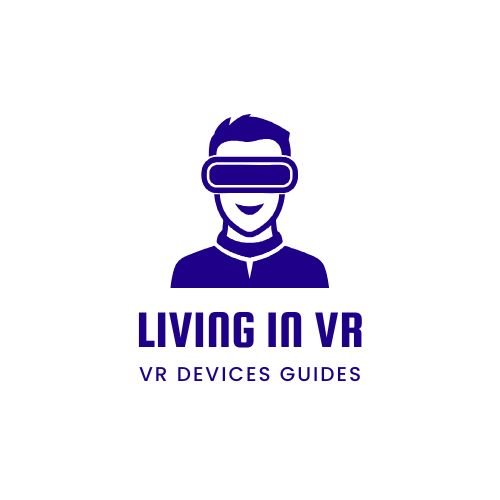

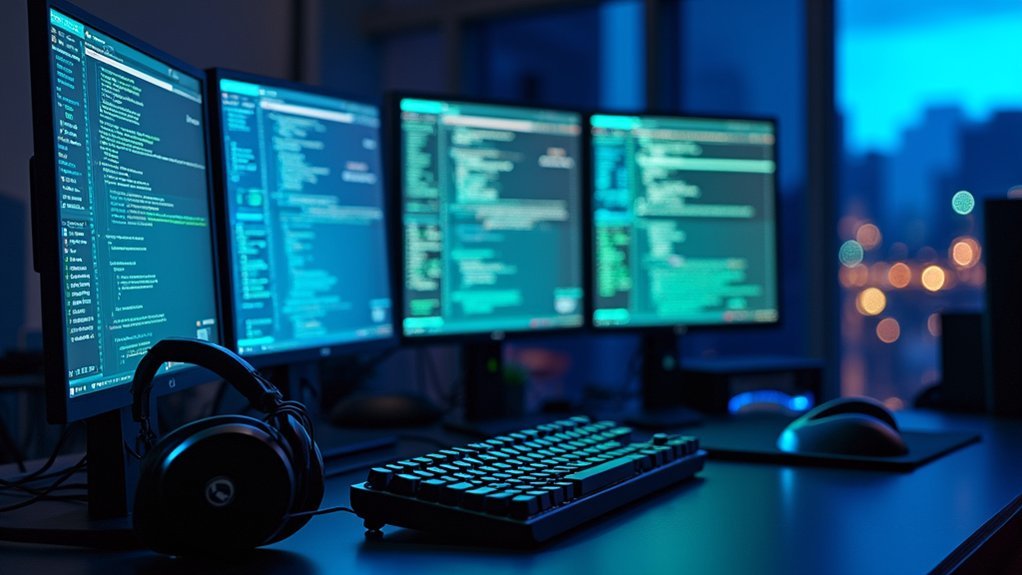
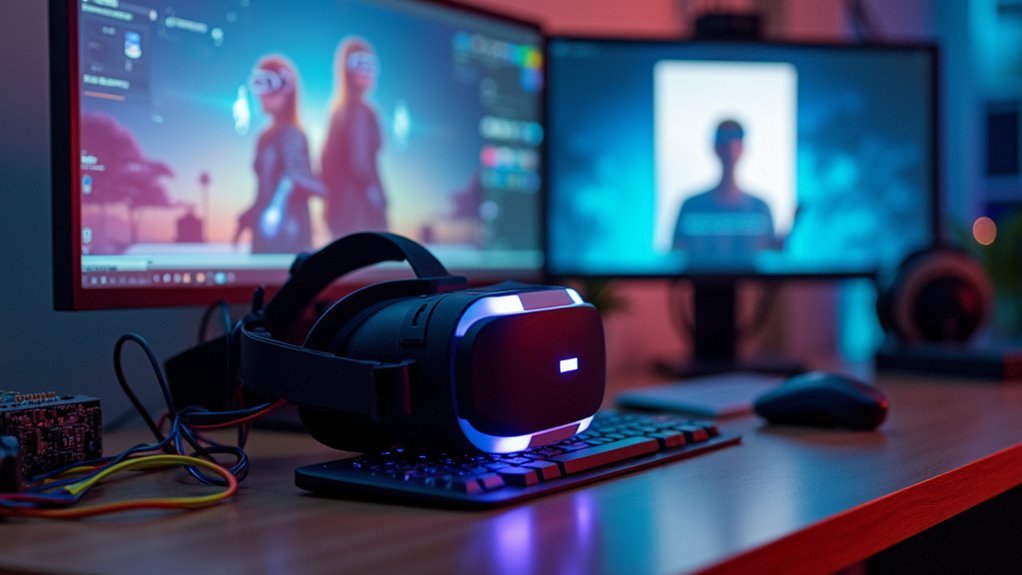
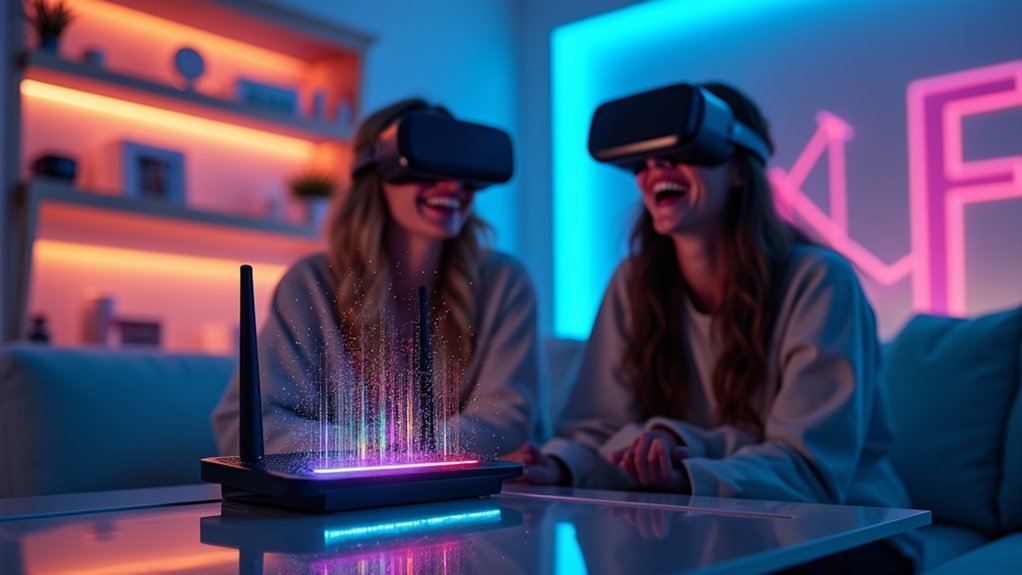
Leave a Reply